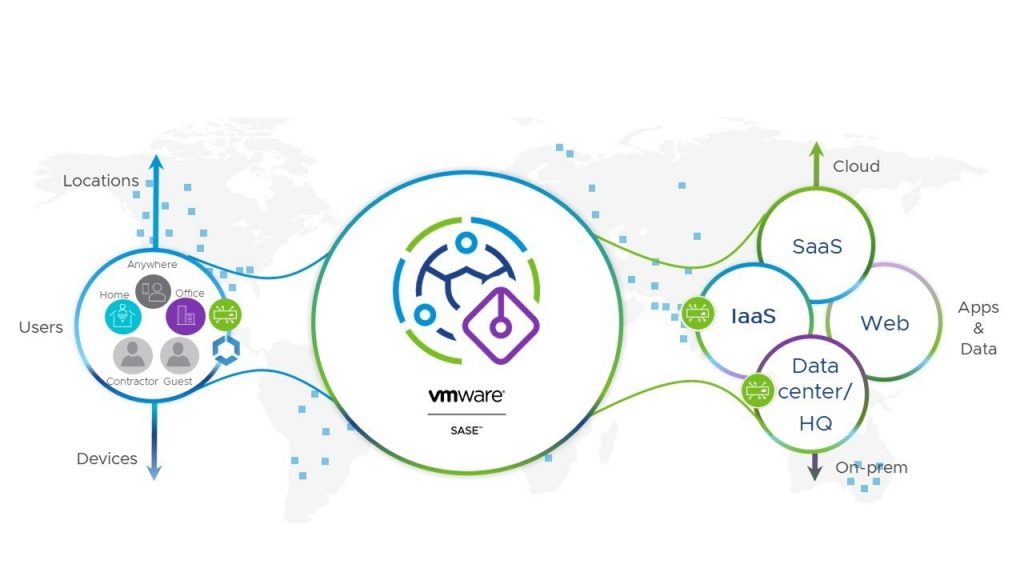COVID-19 altered how enterprises consume business-related apps, ranging from videoconferencing software to workplace productivity tools. Public clouds are driving this industry-wide digital transformation, with companies spending more on them every year.
In fact, enterprises spent $130 billion on cloud infrastructure services last year — a growth of 35%. To satisfy demand, large public cloud providers surged their fleet of data centers to nearly 600 last year — doubling that number from 2015.
Enterprises rely on public clouds, which cut their IT budgets and increase productivity. By bringing their workloads, or apps, to public clouds, IT teams needn’t worry about managing the underlying operating system and server.
What if they need more CPU horsepower and memory? No problem — they just rent it, eliminating the need to buy servers or add more RAM space. It’s really the best of both worlds.
Unfortunately, many enterprises overlook the need to ensure reliable and secure connectivity to public clouds, leaving a gap in user experience when planning their workload migration. At best, this results in poor app performance for users. At worst, users’ data becomes compromised.
Secure access service edge (SASE) overcomes these hurdles, providing companies with secure, reliable, and optimal SD-WAN connectivity to public clouds.
SASE simplifies deployment and management operations for IT, ensuring end users located anywhere can access apps in any cloud, delivering a user experience that matches or exceeds their workloads in a company’s datacenter. Additionally, it gives enterprise IT the flexibility to use cheaper and unsecured connectivity options by leveraging SASE’s security services.

Safeguarding your path to public clouds with SASE makes sense. But looking at the sea of SASE vendors, which qualities are most important? First, find a SASE solution that streamlines your IT teams’ workload, equipping them with a unified management portal for overseeing networking and security policies and ensuring remote access connectivity to public clouds.
Your SASE solution should also be easily launchable, empower your teams with visibility at the edge, boost app performance, and improve network security.
Simplified and flexible deployment options
How can end users connect to their workloads in public clouds? There are a few ways.
First, there’s a SASE vendor-managed solution. Here, your vendor’s hundreds of points of presence (PoPs) enable cloud connections, using a cloud-hosted model to deliver enhanced networking and security services closer on an optimal path between the user and the cloud applications. This walled garden of strategically positioned PoPs provides a highly secure fast pass to countless cloud providers, delivering bank vault-like security that effectively protects traffic from the Internet.
How would this look? For branch and home users, their traffic first passes through an SD-WAN edge device, which sends the traffic to the closest PoP using an SD-WAN overlay tunnel. After the traffic exits the tunnel, it’s passed to the public cloud instance.
Enterprises have the flexibility to offer their mobile and home users with secure remote access solutions delivered from the SASE PoP. The user traffic is delivered over a secure tunnel, originating on their device and terminating on the nearest SASE PoP before it’s sent to the public cloud.
Alternatively, companies can pave their own path to the public cloud using SASE solutions. Here, a vendor’s cloud-based SD-WAN device sits inside the customer’s cloud network and receives all cloud bound traffic from remote sites, datacenters, and users over SD-WAN tunnels — extending SD-WAN end to end. In this architecture, to achieve heightened security, customers must deploy and manage their own security stack in the cloud.
Delivering complete visibility at the network edge
As end users shift from corporate datacenters to public clouds, how can IT teams track, analyze, and troubleshoot the countless number of connection data points? Attacking the problem using traditional, outdated tools is humanly impossible.
Instead, teams leverage artificial intelligence for IT operations (AIOps) to heighten IT operational efficiency, detect performance problems and security weaknesses, decipher why glitches happen, and perform corrective measures. In fact, about 90% of IT teams recognize that AIOps enhances network management to better business outcomes for their companies.
AIOps provides visibility into each users’ experience as users access applications. This helps IT ensure higher productivity while also empowering users to self-serve issues residing outside IT’s control — including troubleshooting home Wi-Fi difficulties or resolving problems with the local broadband service provider.
Providing a rich user experience
End users don’t want to sacrifice quality of experience when migrating apps from their datacenter to public clouds.
This often proves challenging if their WAN provides unreliable connectivity. For example, as you work from home, your app connectivity experience could be much better than your next-door neighbor’s.
Similarly, company employees across branches may encounter network performance problems that cause unnatural delays during audio chats, disconnect video from the audio during video calls — and even prevent users from accessing their apps.
How can SASE help? By continuously monitoring your traffic, SD-WAN instantly detects underlying conditions that cause link latency and automatically takes remedial action dynamically — removing the need for IT teams to intervene — giving you a high-quality, consistent user experience.
Next-level security
Beyond the security solutions we’ve discussed, SASE also plugs vulnerability gaps caused when users undertake risky activities, which may jeopardize workloads in the public cloud.
When enterprises migrate workload to clouds, they also access Internet applications for productivity. As apps are prone to malicious attacks, users and infrastructure must remain protected. In response, SASE provides a layer of security when users download content from these websites. By leveraging security services delivered by SASE PoPs, enterprises can shrink the attack surface and limit their threat exposure.
Connecting to public clouds can be challenging — if you’re not using the optimum conduit, you may experience poor connectivity or, even worse, compromise your personal data or infect an app with malware.
Here’s the good news: SASE effectively migrates apps from your datacenter to public clouds — substantially improving connectivity and security to significantly enhance user experience. As you consider SASE vendors, find the one who can help you easily deploy SASE, provide visibility at the edge, better app performance, and increase network security.
Learn more
Visit the VMware SASE and VMware SD-WAN web pages to find out more about VMware’s solutions.






